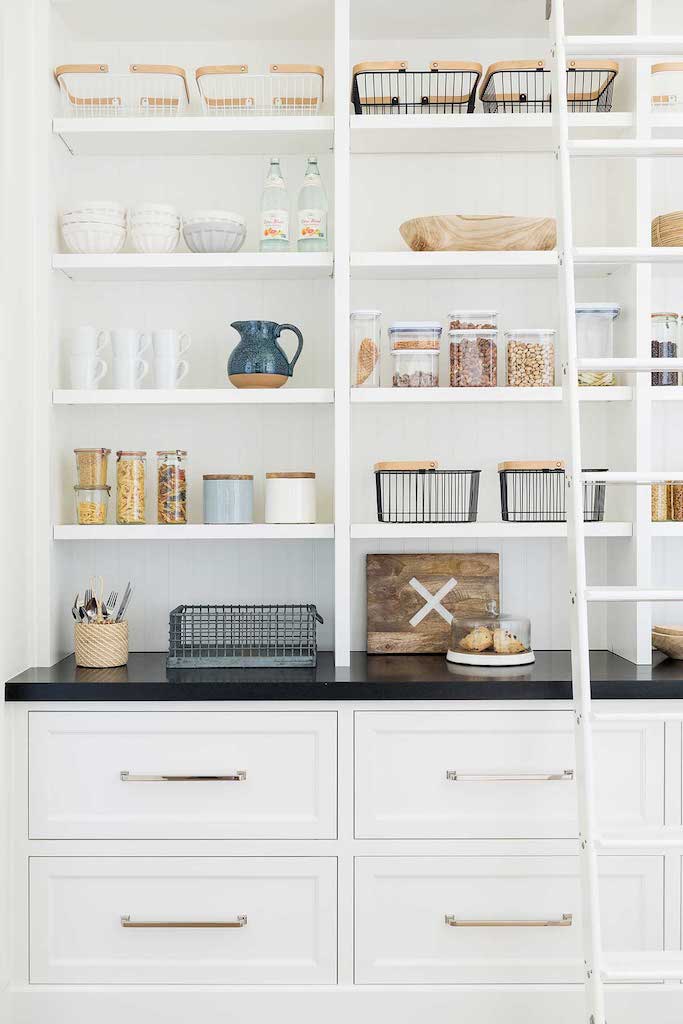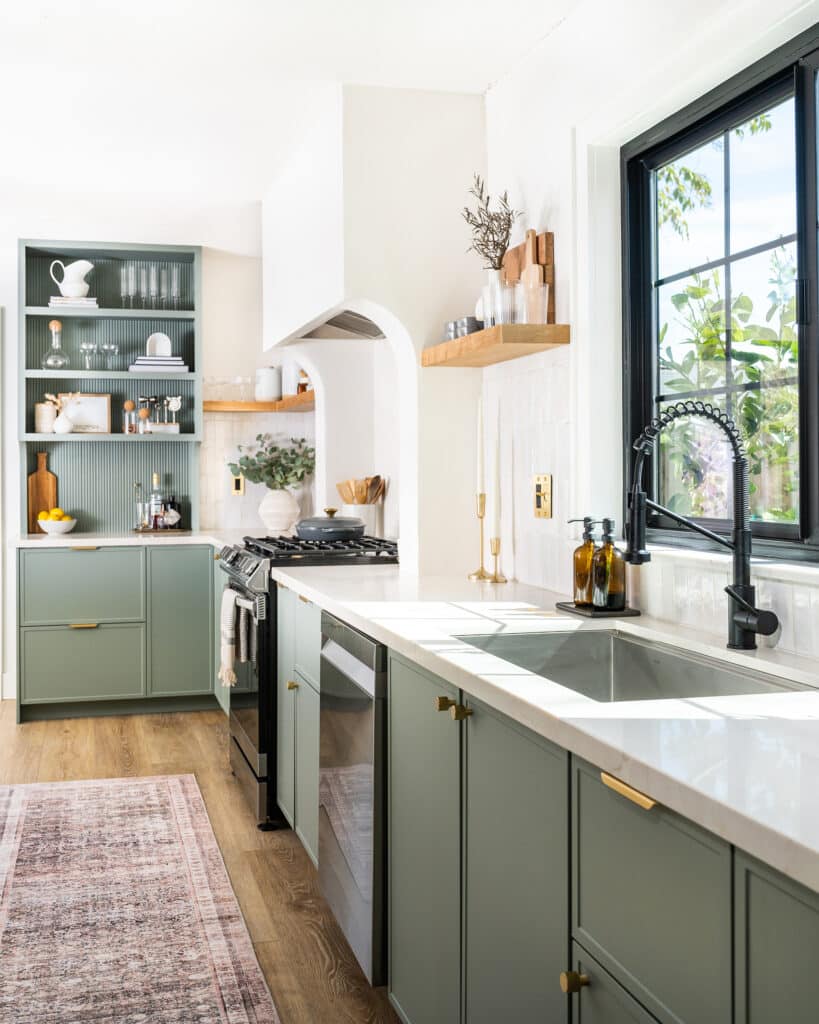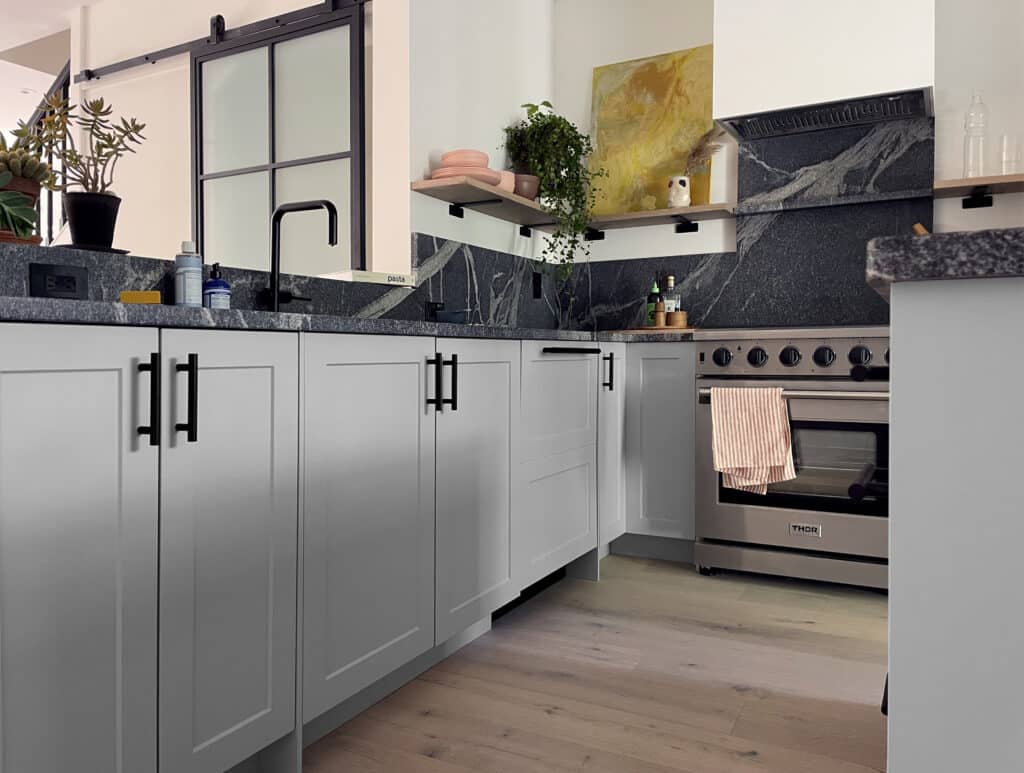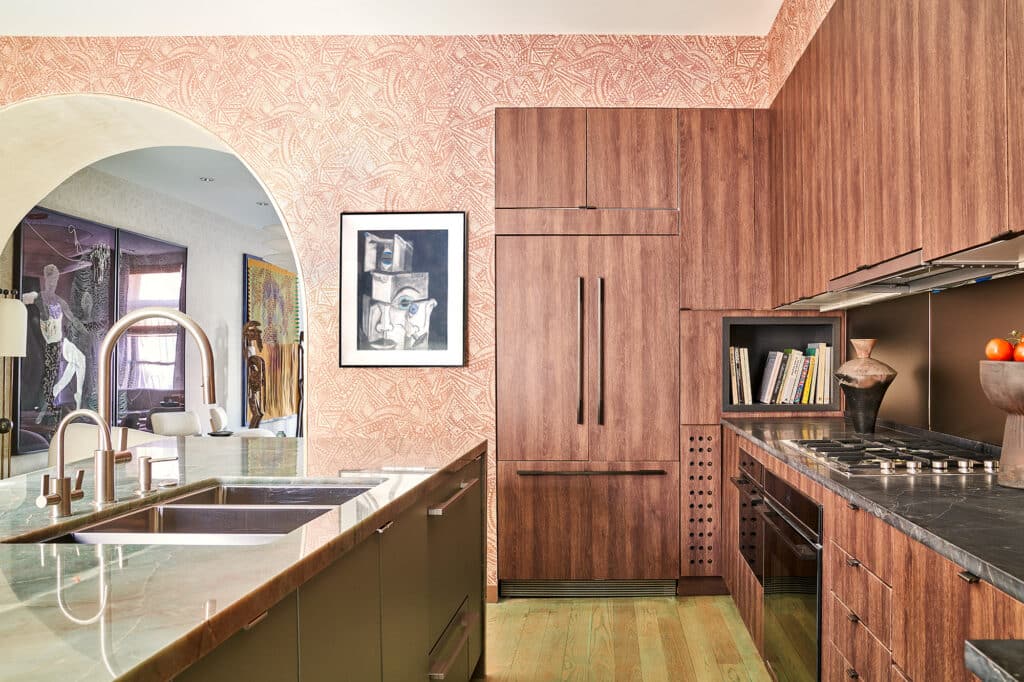Despite even the most steadfast diligence, there are certain spots in a home where clutter seems to multiply.
A section of kitchen countertop, the corners of an entryway, and the confines of a hall closet fit this bill. Clea Shearer and Joanna Teplin, the founders and professional organizers behind The Home Edit, completely agree. But they say there’s a different area that’s even harder to tame: the pantry.
“A pantry, big or small, can be one of the hardest spaces to keep organized,” Shearer says. “This is simply because it’s accessed multiple times on a daily basis, typically by multiple people, and food items have a high turnover rate.”
Keeping a pantry organized may feel like an uphill battle, but it isn’t a lost cause. Shearer and Teplin have six simple considerations that make it possible to restore order in this unruly spot, and maintain its ease for the long haul. Not only does their plan help, but it also feels good to know that even the experts find pantry organization tricky, too.
Be Realistic
For starters, don’t feel like you need to tackle the entire pantry at once. “Pick your problem area and go from there,” Teplin says. “Baby steps over a low, low bar will help keep you motivated.”
To get started, do what Teplin and Shearer call an “edit.” It’s a crucial part of the process that means taking everything out, grouping similar items together, and purging or donating what you no longer need or want. It’s the only way to visually see what you’re working with and what’s really important.
Group Staples Together
Clear canisters are great for dry goods and staples: They eliminate odd-shaped boxes, and help you spot what you need in an instant. Larger ones are great for cereal, pasta, flour, and sugar, while smaller ones are great for dried fruit, nuts, and grains. But be realistic with your time and lifestyle.
“The key is to create a system that fits a person or family’s lifestyle, so it will be easy for everyone to maintain,” Shearer adds. “Aesthetics are important, but function always comes first.” If you’re a busy parent or have a time-consuming job, you’re not going to want to come home from the grocery store and empty everything into canisters.
Categorize Everything
If “rehoming” seems like too much of a time commitment, Shearer and Teplin don’t want you to feel cornered. Instead, use what you have to build a broad system—the point is to make sure one exists. “It’s important to have some large categories in bins that aren’t overly specific or singular,” Teplin says.
For example, something like “dinner bin,” might hold everything from cans of soup, to marinara sauce, to taco shells. When categories are broad, you’ll have some organizational guidance, but you’ll never be stuck with an item that doesn’t have a home. In Clea’s pantry, groupings are labelled under baking, cooking, dinner, breakfast, cereal, snacks, and wet ingredients.
Give Each Bin a Label
Printing labels with an inexpensive label maker, or simply using a dry erase marker, is the key to long-term maintenance. These clear reminders hold you and other members of your household accountable when replacing pantry items. “Kids will be more likely to keep a space organized if they know where to find everything, and where it goes once they are done,” Shearer notes.
Place Bins Strategically
As for where exactly these organized bins should go, Teplin notes that each location depends on your daily habits. “Exact placement depends on what items you access the most frequently, but in general, we find that snacks work better in bins on a lower shelf, since they tend to be more grab-and-go,” Teplin says. “Spices and cans should be within reach, especially if you cook a lot, and stored on turntables or tiered shelving.”
Schedule Regular Cleanups
The bottom line: Even the best systems can break down at some point. “Schedule a quick 15-minute pass per month to weed out expired or nearly finished items,” Shearer says. Though it may cost you a few minutes here and there, it’ll ultimately save you the time and effort of a massive overhaul later.
If you buy something through these links, we’ll probably earn an affiliate commission—don’t worry, it won’t cost extra. We promise to only recommend items we’d buy ourselves!








